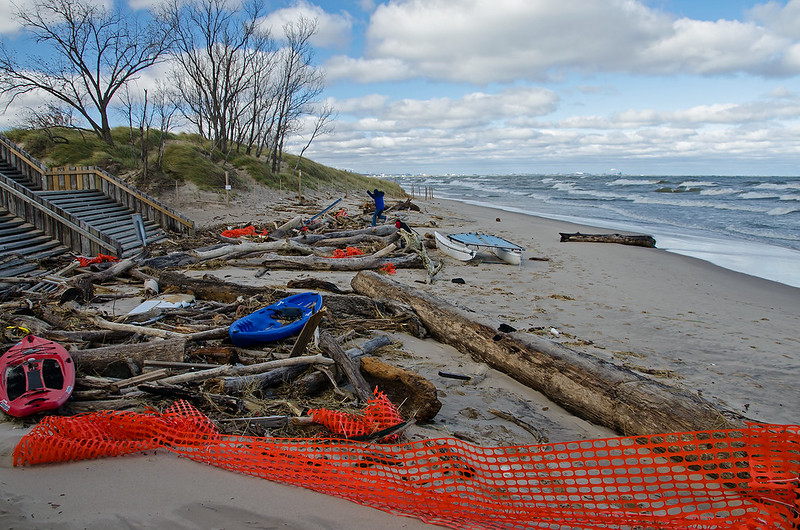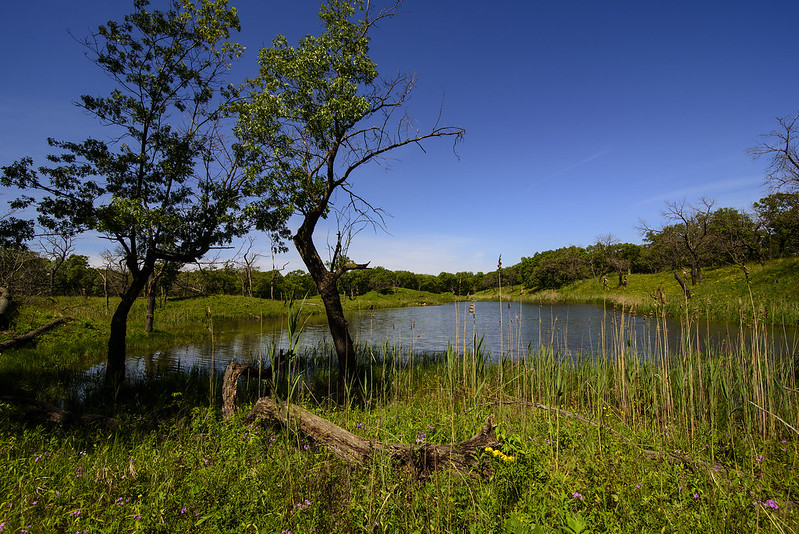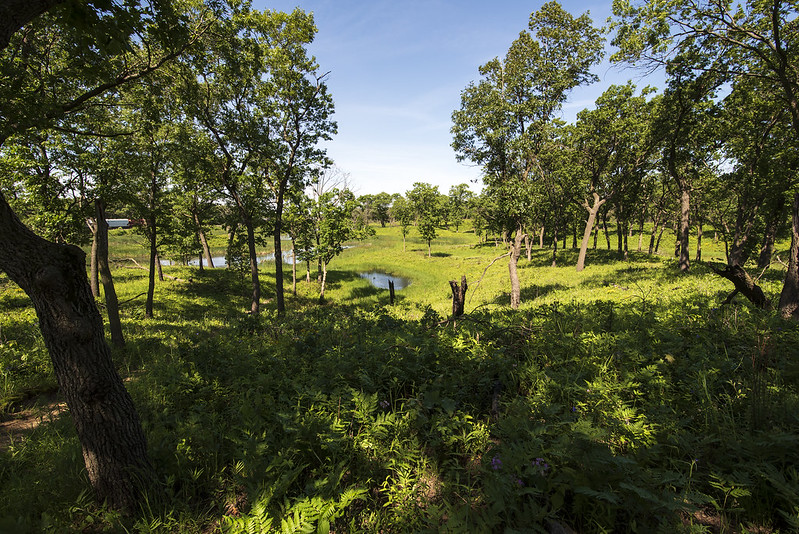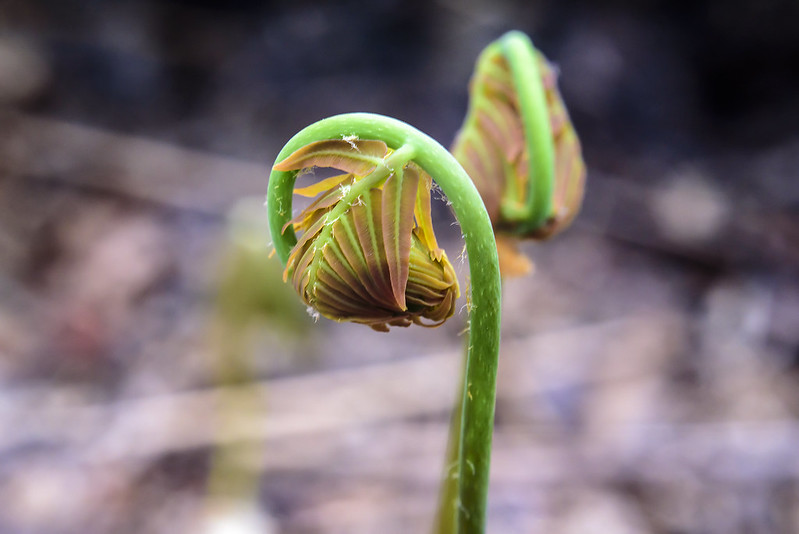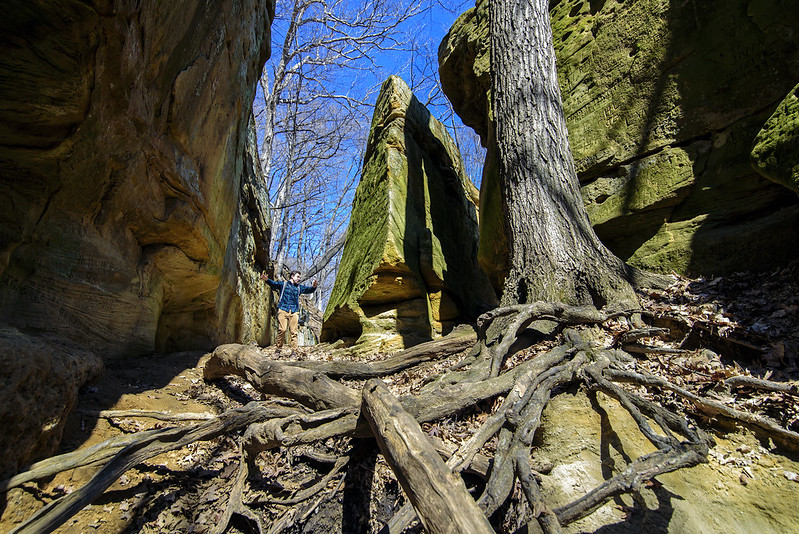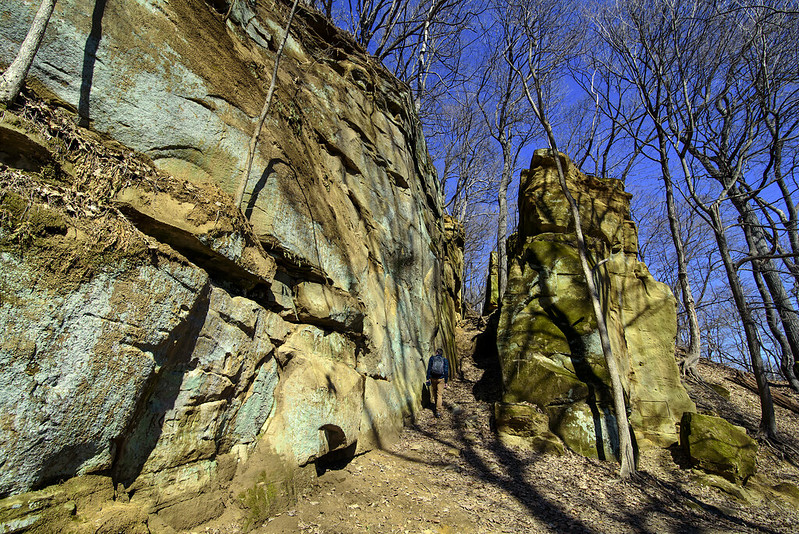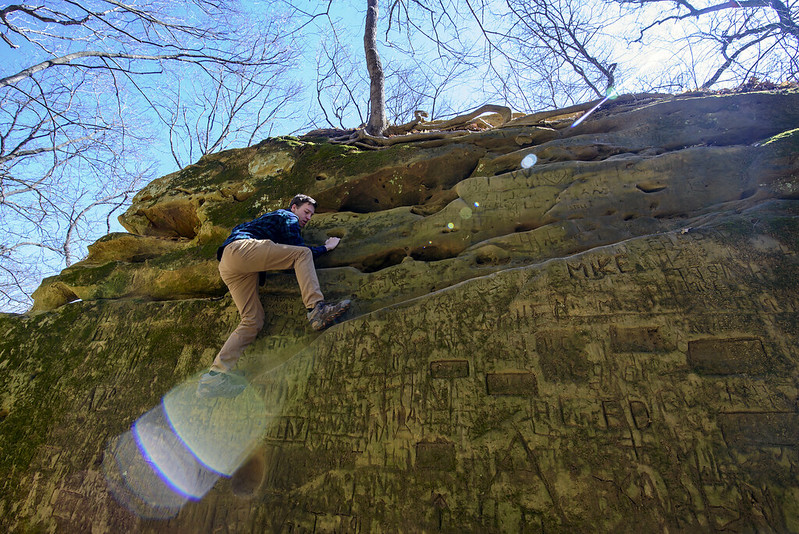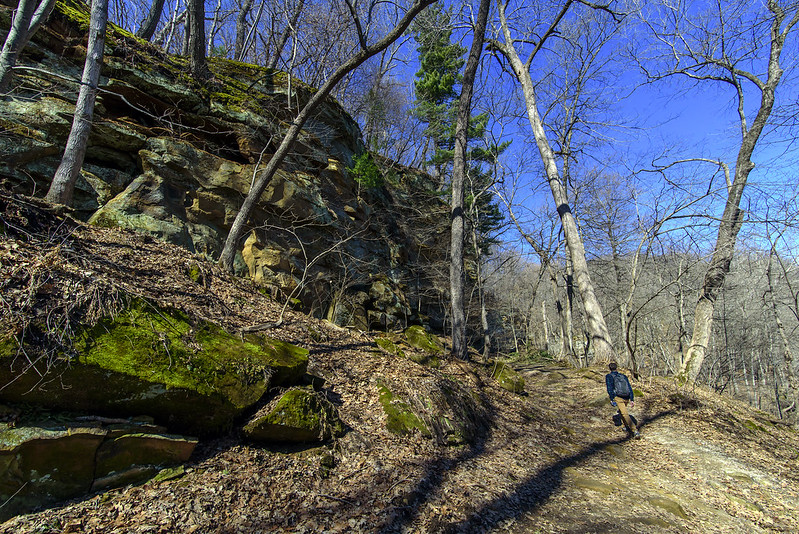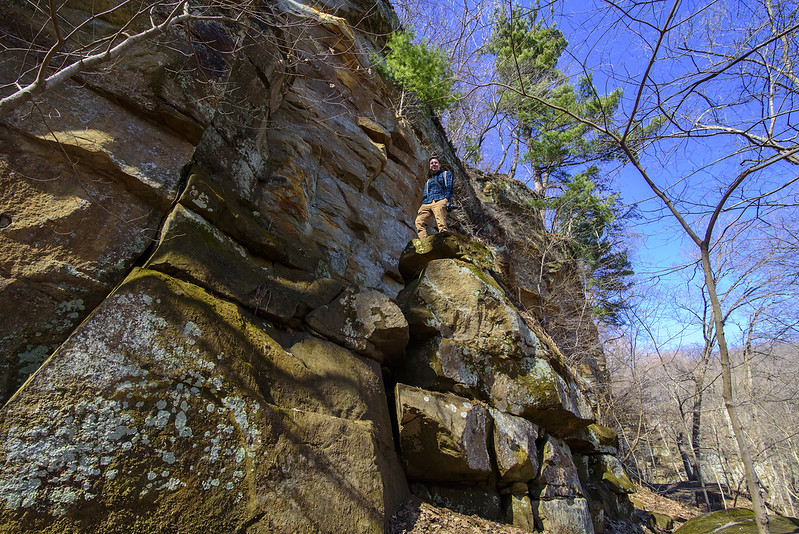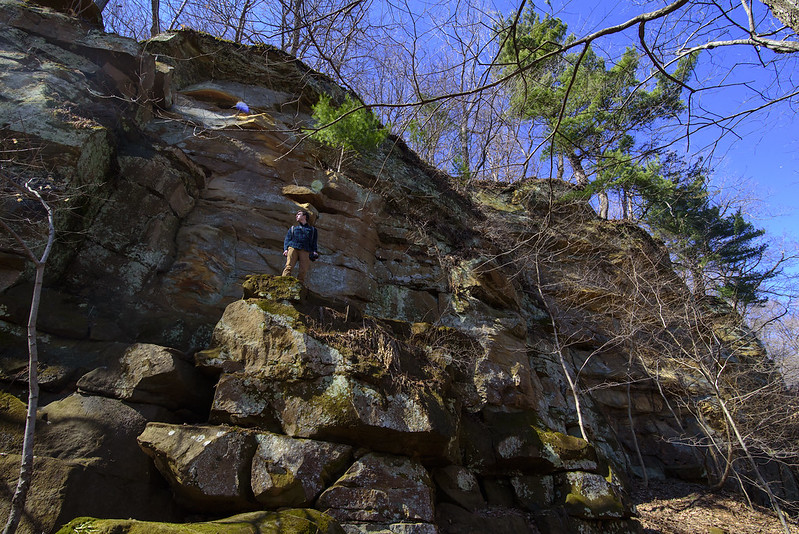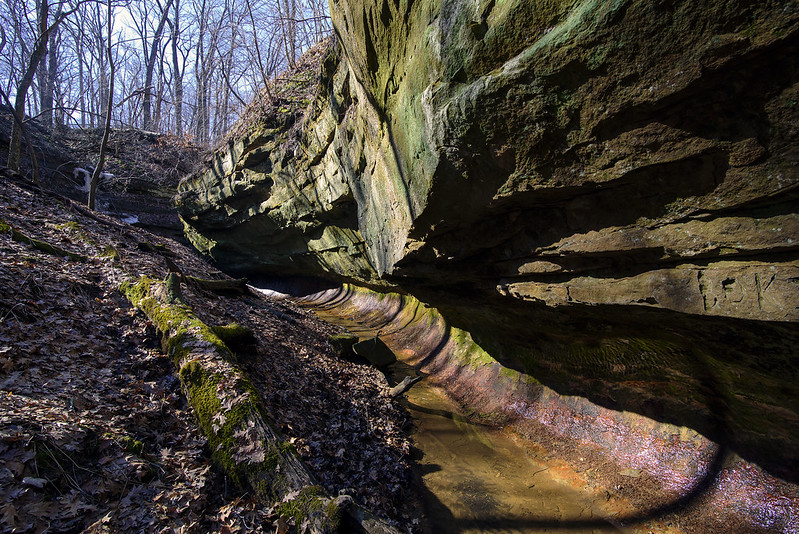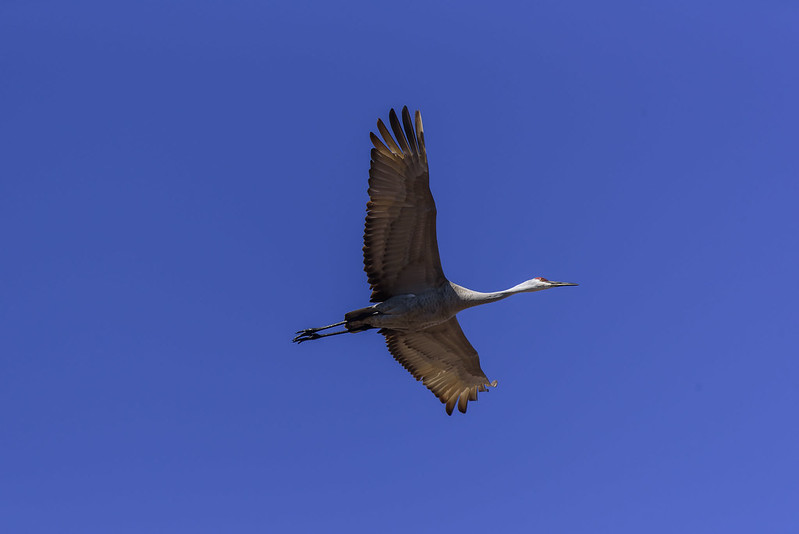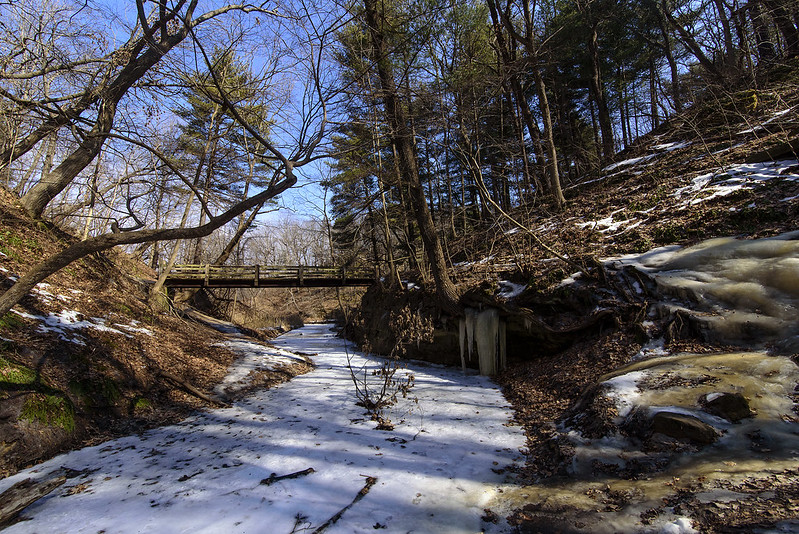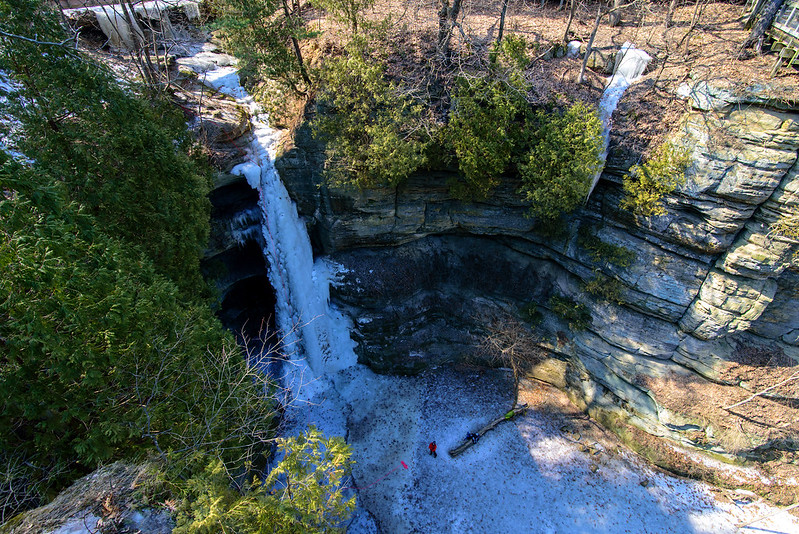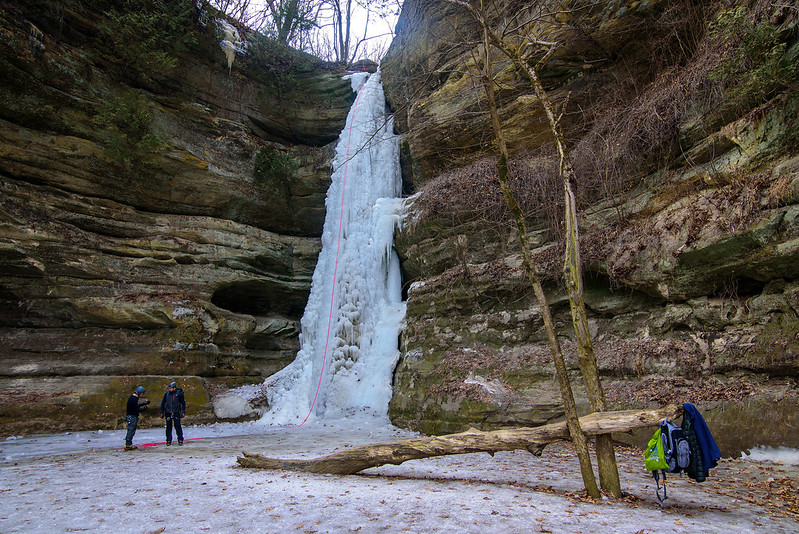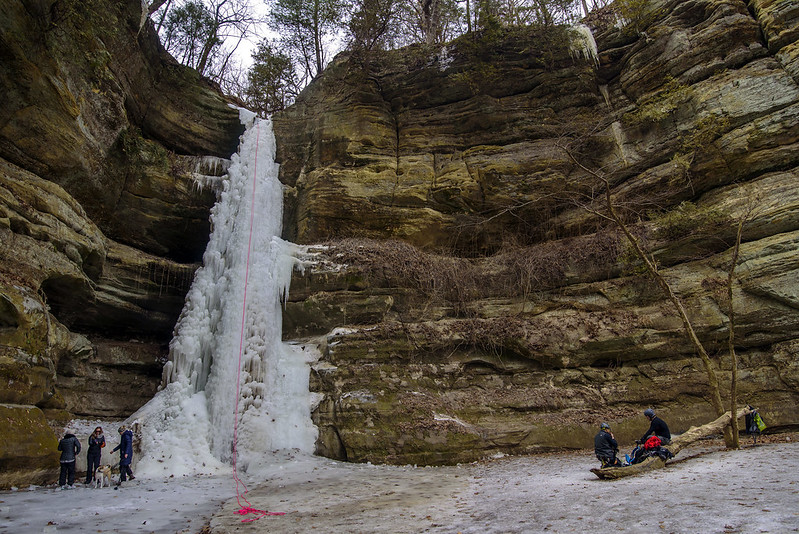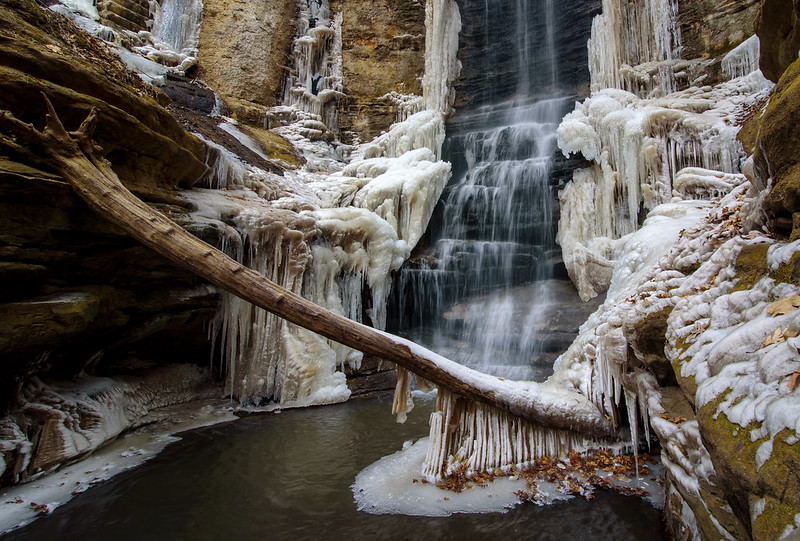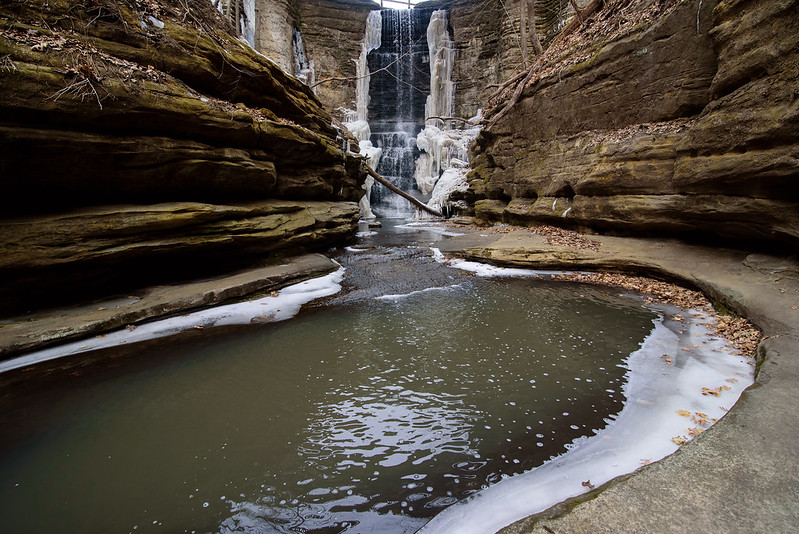
Contrary to what many people believe, the dunes along the southern shore of Lake Michigan are ever-changing - have been, and will continue to be. The forces of nature such as rain, wind, and the waves erode parts of the beach and dune, and build another.
Rising water levels this year, along with some "starving" of the beach are contributing to the collapse of portions of the windward sides of the dunes in the Indiana Dunes National Park. A starving beach is one where the natural replenishment of sand is slower than the loss of the sand due to wind and wave action, so the beach and associated dunes lose sand.
These dunes are crumbling at a relatively fast rate. The paths and trails that once meandered along the ridge are long gone - washed into Lake Michigan - not because of people walking on them, as many will attempt to mislead the visitor. Walking on some sand dunes and plants will certainly disrupt the natural state of the dunes, and often kill the plants that hold the dunes in place. But this is a case of the lake taking over, not human activity. The Michigan City pier a mile or so away has been blamed for some beach starvation, and while this may be true to some extent, it seems unlikely that the single pier could affect the beaches miles away to such a great extent.
The trees seen in this photograph were growing on the top of the dune just a few weeks ago. The waves undermined the foot of the dunes, and slowly collapsed the side. Some trees fell sideways and were washed away by the waves, but these just slid down in an upright position, and the waves buried them in sand. They appear to have been there for years, but in fact, they have only been there a few short weeks.

Wind, rain, and gravity have all combined to create some interesting formations as the dunes erode. These formations look a lot like the mountains and stone formations of Bryce Canyon National Park. They change right before your eyes, small amounts of sand slide slowly down the dune, others crumble and chunks roll down. Some of this movement resembles waterfalls, but of sand. Beautiful fans of sand form at the foot of the dunes, but are quickly washed away by the waves as soon as the winds pick up on Lake Michigan.

While it's sad to see some of these majestic dunes crumble - especially the ones I used to frequent, it's all just a natural part of the dune's life cycle.
 Our hike inland through the grassy and wooded dunes began at the beach, where we found a trail through the valley between two dunes. The size of the dunes don't show so well on the photos - they are much larger than they appear - especially when you hike up and down. We decided to head between the dunes for just a bit, then take the trail up the dune on the right side to hike the ridge all the way around the series of dunes near what is called the blowout. This time of year is perfect for hiking in the tall Marram grass. The temperature is a bit cooler for the climbing portions, and there are no ticks to worry about. Along with the ever-changing plants of the dunes, we always encounter some sort of animal or insect. We were once startled by a very loud turkey we surprised as we came over this ridge. He all of a sudden flapped his wings and screamed as he flew away, waking up every creature within a mile on a very quiet early morning.
Our hike inland through the grassy and wooded dunes began at the beach, where we found a trail through the valley between two dunes. The size of the dunes don't show so well on the photos - they are much larger than they appear - especially when you hike up and down. We decided to head between the dunes for just a bit, then take the trail up the dune on the right side to hike the ridge all the way around the series of dunes near what is called the blowout. This time of year is perfect for hiking in the tall Marram grass. The temperature is a bit cooler for the climbing portions, and there are no ticks to worry about. Along with the ever-changing plants of the dunes, we always encounter some sort of animal or insect. We were once startled by a very loud turkey we surprised as we came over this ridge. He all of a sudden flapped his wings and screamed as he flew away, waking up every creature within a mile on a very quiet early morning.  After taking the trail up the dune, we were able to view the valley floor, and the spot where the top photo was taken. Lake Michigan doesn't always appear this deep blue, most of the time it's a bit lighter in color. This is probably due to the time of year, time of day, and the overall weather conditions. It does, however, provide a great contrast to the sky and sand near it.
After taking the trail up the dune, we were able to view the valley floor, and the spot where the top photo was taken. Lake Michigan doesn't always appear this deep blue, most of the time it's a bit lighter in color. This is probably due to the time of year, time of day, and the overall weather conditions. It does, however, provide a great contrast to the sky and sand near it.


